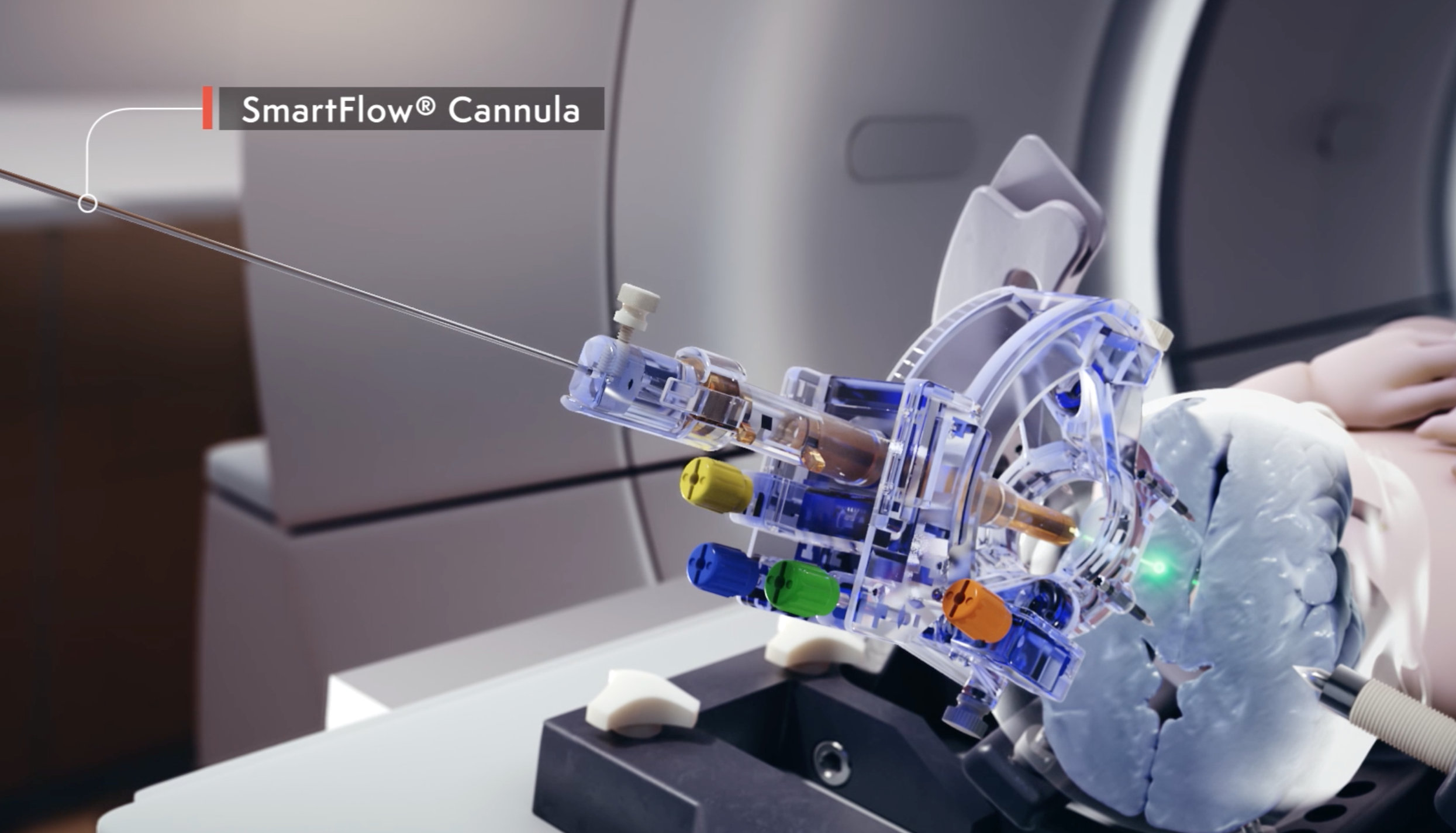
A surprising innovation transforms the way medics handle bleeding on the battlefield.
Disorders like Parkinson’s and Tourette’s syndrome make millions of people unable to feed, clothe or bathe themselves. But many of the effects can be alleviated by a type of brain surgery called stereotactic neurointervention. A tiny stimulator placed deep inside the cerebrum releases mild electric signals that re-regulate brain function—essentially, a pacemaker for the brain. It’s a difficult, time-consuming operation though. Surgeons go in blind, guided by an MRI snapshot and feedback from the patient, who must be conscious during open-skull surgery. And it’s so difficult that just a handful of surgeons are qualified, and can only perform two or three per month.
Working closely with top neurosurgeons at UC San Francisco’s medical center, Ziba’s designers and engineers developed the ClearPoint Neurosurgical Platform. The platform’s centerpiece is a surgical frame that mounts on the patient’s head, letting surgeons direct the probe with incredible precision. Constructed entirely out of ceramics, polycarbonate and nylon, the frame operates flawlessly in the intense magnetic field of an MRI. Working in conjunction with a groundbreaking software package and real-time MRI imaging, the platform makes neurointervention surgery more intuitive and more precise.
The end result is a procedure that’s faster and safer, dramatically reducing hemorrhages and other complications, while allowing for quicker setup. Doctors using the ClearPoint system report that the average time for a neurointervention has dropped from seven hours to just over three, letting them perform 2-3 procedures per week, rather than 2-3 per month. Increased accuracy means they’re hitting their intervention targets on the first try nearly every time. ClearPoint is now in use by 13 hospitals in the US, including two of the nation’s top 10 neurological institutions, and is being rapidly embraced in the EU. ClearPoint also shows promise in new kinds of cancer treatment, allowing doctors to implant custom gene therapies inside brain tumors with incredible precision.


“ClearPoint allows me to surgically treat patients I would not be able to treat using other platform systems.”
Reduction in procedure time: from seven hours to three
SurgiVision is a leading developer of MRI-guided interventional systems, creating innovative platforms for performing the next generation of minimally invasive surgical procedures in the brain and heart.
User Insights
Product Design
Mechanical Engineering